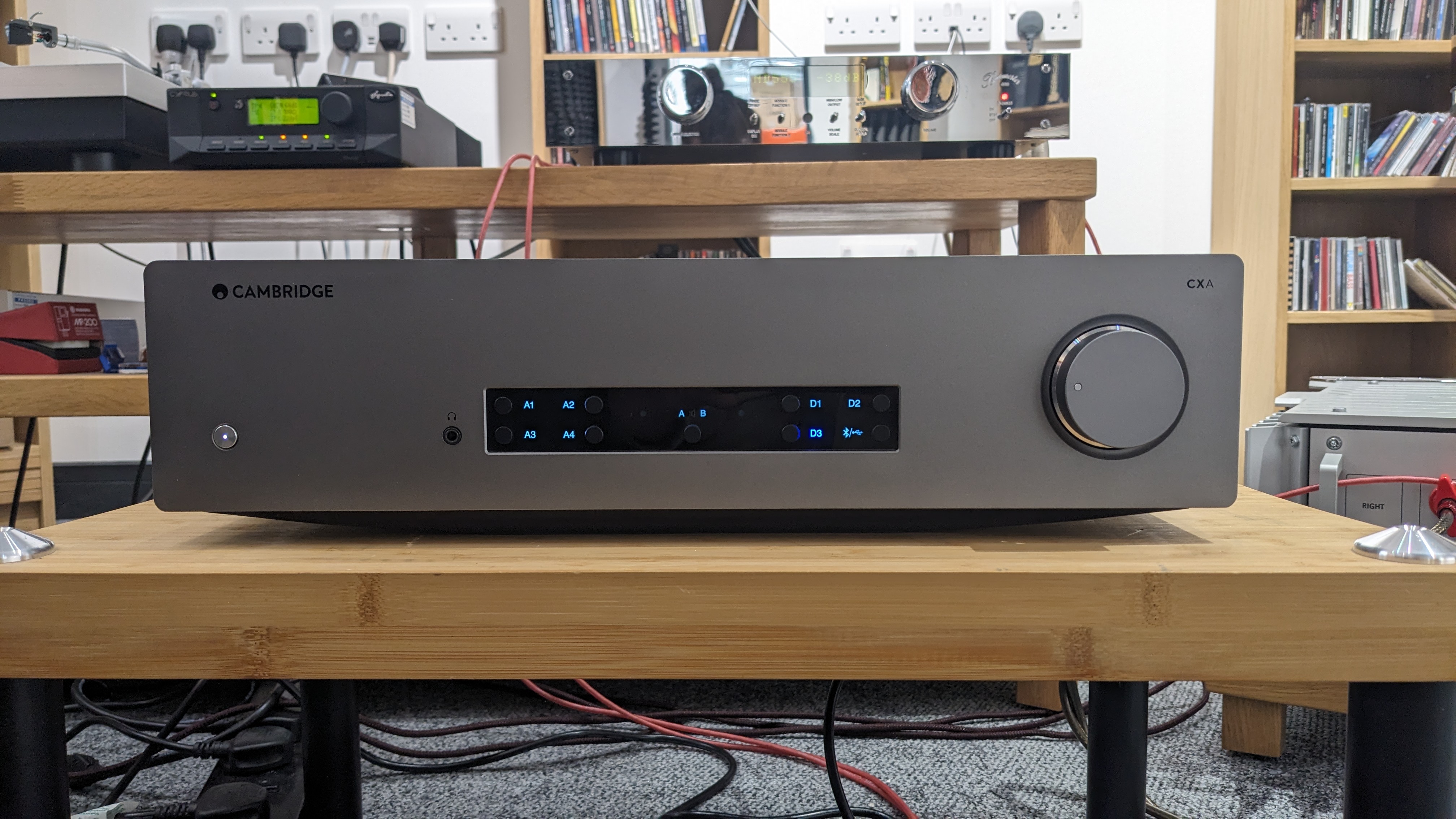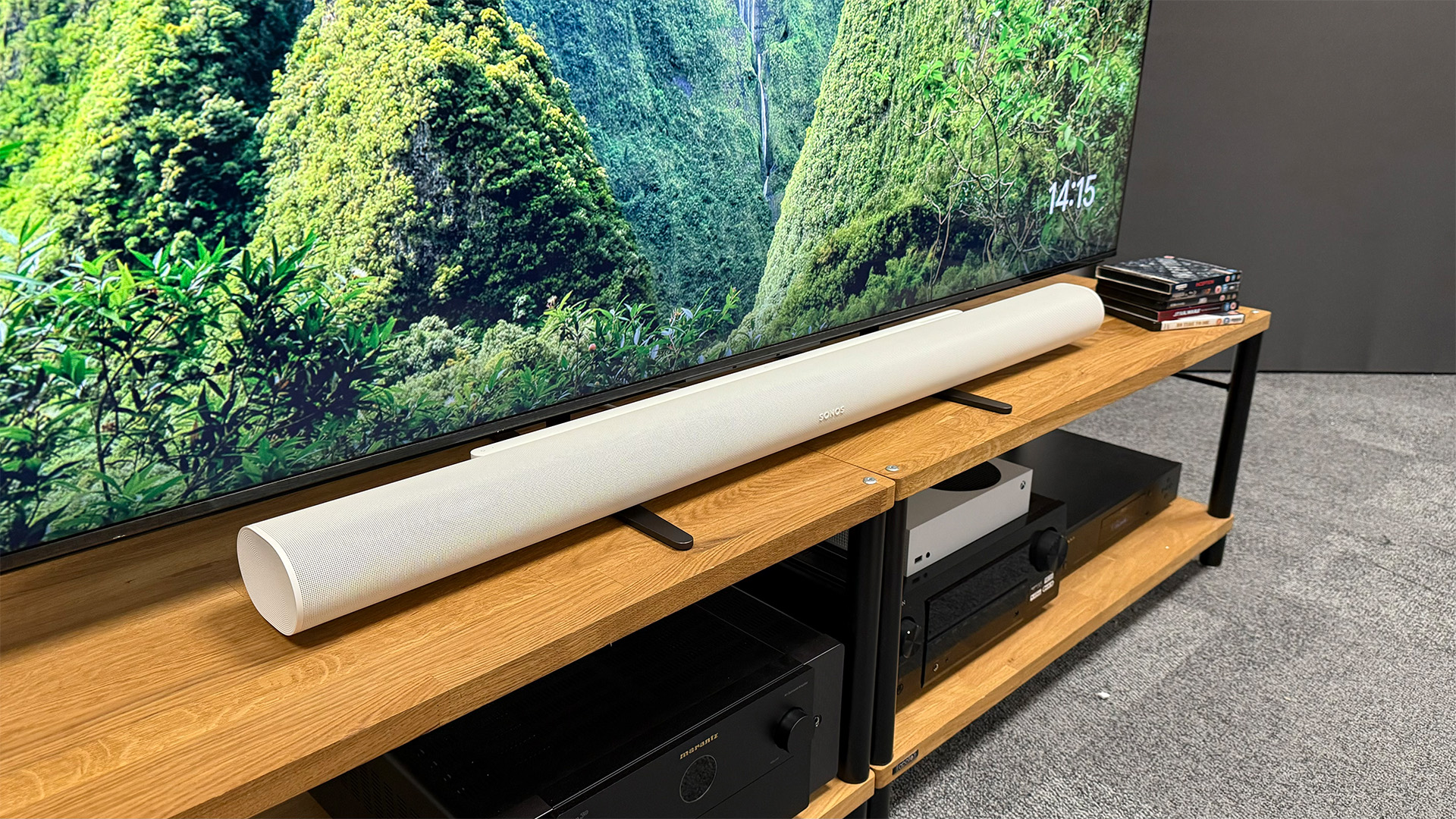What Hi-Fi? Verdict
Cambridge Audio has moved its acclaimed CXA81 amplifier on considerably in almost every aspect, but it doesn’t quite capture the essence of music like its closest rival does
Pros
- +
Big, spacious, authoritative sound
- +
Decent DAC
- +
Generous feature set
Cons
- -
Lacks rhythmic drive and cohesion
- -
Beaten for outright expression
Why you can trust What Hi-Fi?
“Oh hello, old friend,” we thought as we dusted off our long-held sample of Cambridge Audio’s original CXA81, smiling as we lifted it out of the box as a whisky connoisseur might a 40-year-old bottle of single malt Scotch.
This 2019-released integrated amplifier is fondly remembered at What Hi-Fi?, having won back-to-back What Hi-Fi? Awards for four years. In fact, we named it our Product of the Year in the stereo amplifier category each time, too.
Its re-emergence in our test room isn’t, however, to satisfy some nostalgic longing, but owing to the long-anticipated arrival of a second-generation version, which lands at What Hi-Fi? towers with clown-sized shoes to fill.
That the Cambridge Audio CXA81 MKII not only replaces the CXA81 but also the step-down CXA61 – also a four-time Award-winning star – in the company’s CX series, only adds to the pressure.
Needless to say, we are itching to see how far this much-loved model has come in six years (spoiler: it’s quite a way) and whether it can claim back the crown from the Arcam A15 that dethroned its predecessor back in 2023.
Build & design
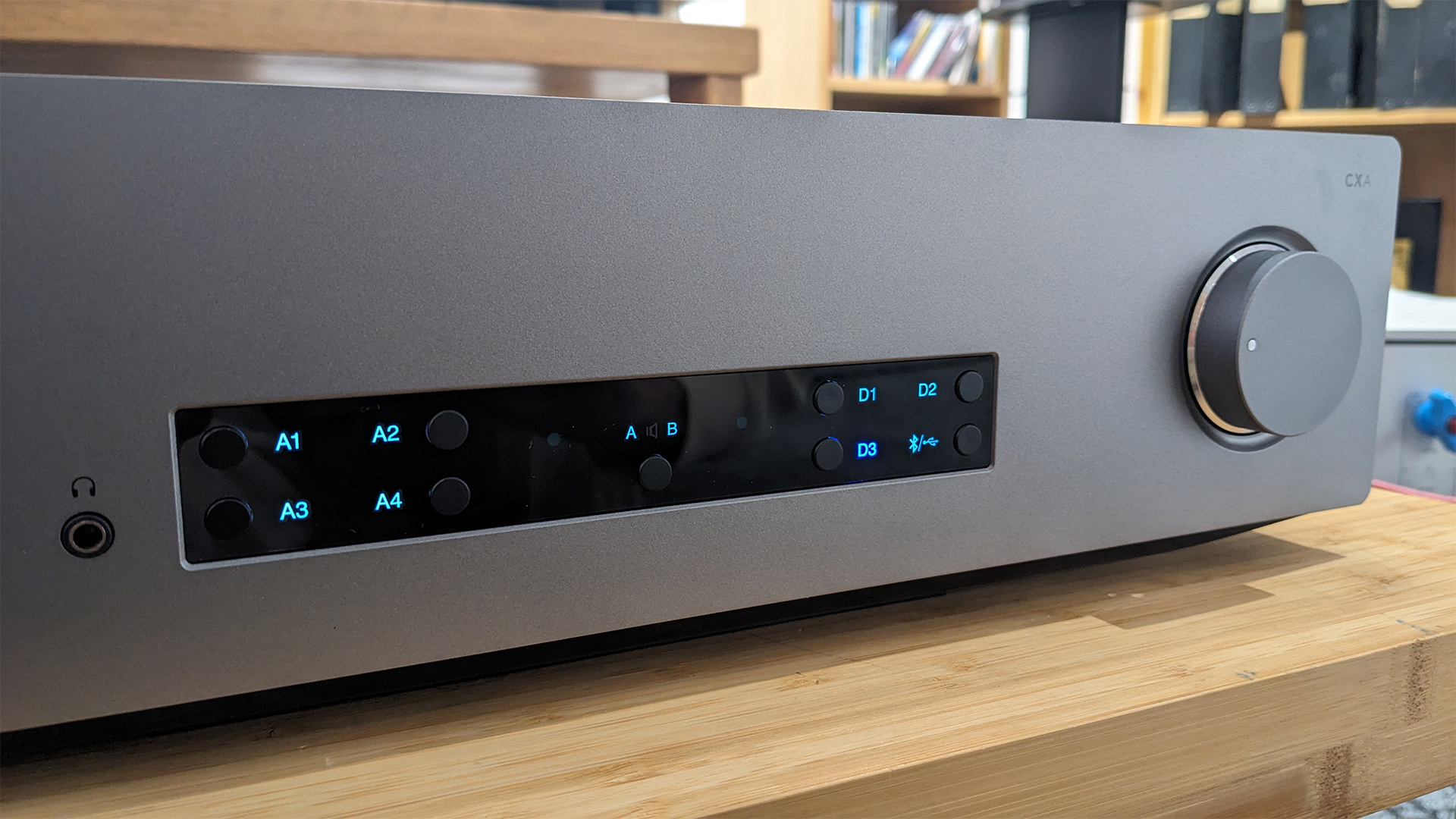
If you judged innovation on looks, you would think Cambridge Audio has stood still in its transition from the original, now-discontinued CXA81 to this MKII model.
Its casework is identical to its predecessor, to the point that a game of spot the difference between our samples would throw up only two minor disparities – the somewhat odd move from ‘CXA81’ to simply ‘CXA’ for the front-chassis printing on the CXA81 MKII, and the (removable!) front-panel stickers on the original – neither of which screams ‘evolution’.
The latest hi-fi, home cinema and tech news, reviews, buying advice and deals, direct to your inbox.
Did Cambridge Audio still possess surplus casing stock of its CXA81, or did the design team simply see no room for improvement? Despite the five years that have passed between the models’ release, perhaps the British company considered the smart Lunar Grey chassis and its connections still befitting a modern-day amplifier. And we wouldn't argue.
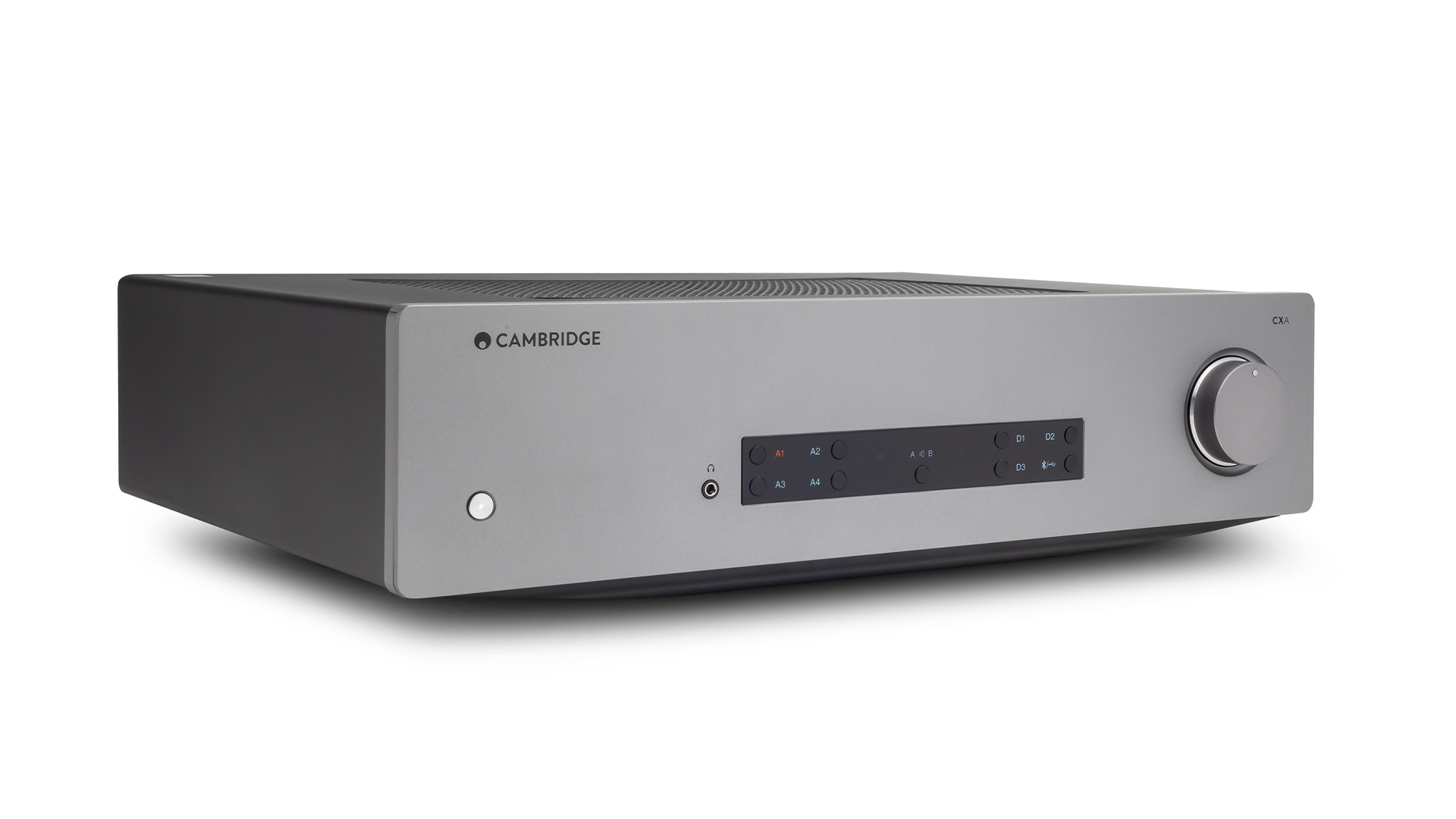
Power 80W per channel
Phono stage? No
Inputs 3 x RCA, balanced XLR, coaxial, 2 x optical, USB-Type B
Bluetooth? Yes (aptX HD)
Outputs Pre, sub, 3.5mm headphone
Dimensions (hwd) 11.5 x 43 x 34.1cm
After all, the amplifier market is hardly one of the most aesthetically progressive categories in consumer electronics and this model remains sleek, substantial and well-equipped by today’s standards.
And if this is one reason that Cambridge Audio has been able to keep the RRP consistent between the generations – it remains £999 in the UK and, at $1199, is actually $100 cheaper in the US – then all the better.
We love the large volume dial and how the inset bottom makes the facade look as though it is floating centimetres above whatever support it sits on.
A text display, as found on its Arcam rival, would, in our minds, be both aesthetically and practically preferable, but woe betide us to begrudge the simplicity of the Cambridge’s input LED display and accompanying physical buttons.
Features
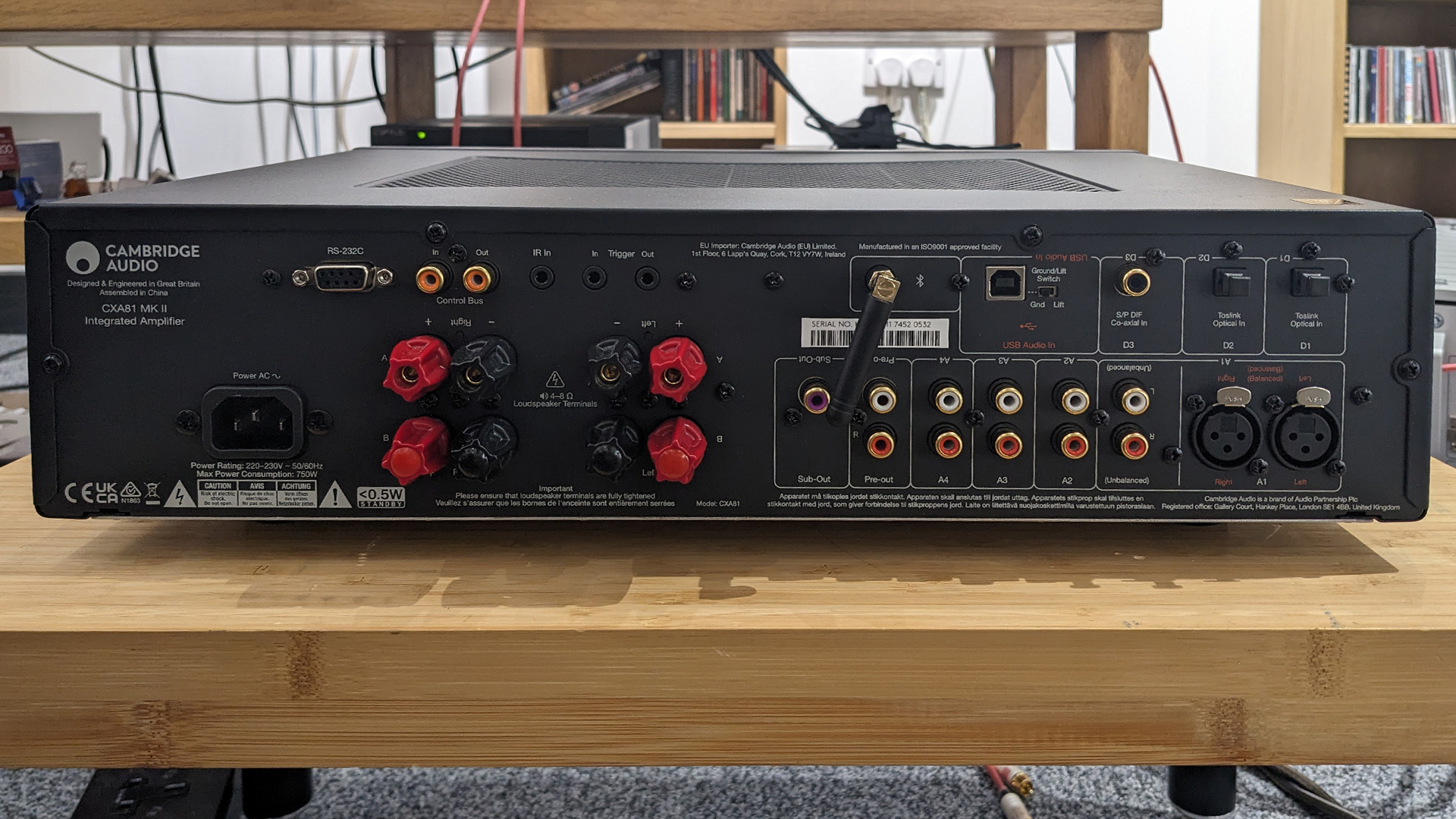
Speaking of inputs, you won’t feel shortchanged. Alongside the typical line-level (three), optical (two) and coaxial (one) inputs are single USB Type-B and balanced XLR, giving you a range of options to connect a music streamer, CD player, TV or computer/laptop if you so wish.
Predictably, Cambridge Audio suggests its own CXN100 – a five-star product – as a natural streaming partner for the CXA81 MKII, which sensibly also has balanced XLR connectivity (outputs).
You can get wireless playback without going down the separate streamer route courtesy of the amplifier’s built-in aptX HD Bluetooth, though the performance potential of Bluetooth technology is comparatively limited.
Elsewhere of note on the busy rear panel are subwoofer and pre-out outputs, accommodating the expansion of your system to an external sub and power amplifier respectively, plus a Control Bus socket, which allows any compatible Cambridge product to power up with the CXA81 MKII in synchrony.
So what, we hear you ask, is new here?
Like the most recent generations of iPhones, the CXA81 MKII doesn’t wear its progression on its sleeve, but hides it.
Beneath the hood, Cambridge Audio has swapped in more “premium” components in the Class A/B amplification circuitry, and chosen a more advanced DAC chip for its digital circuitry; the ESS ES9018K2M SABRE32 supports PCM up to 32-bit/384kHz and DSD256.
So while you may not get enhanced features or aesthetics, you should, Cambridge Audio says, get enhanced sound quality.
Sound
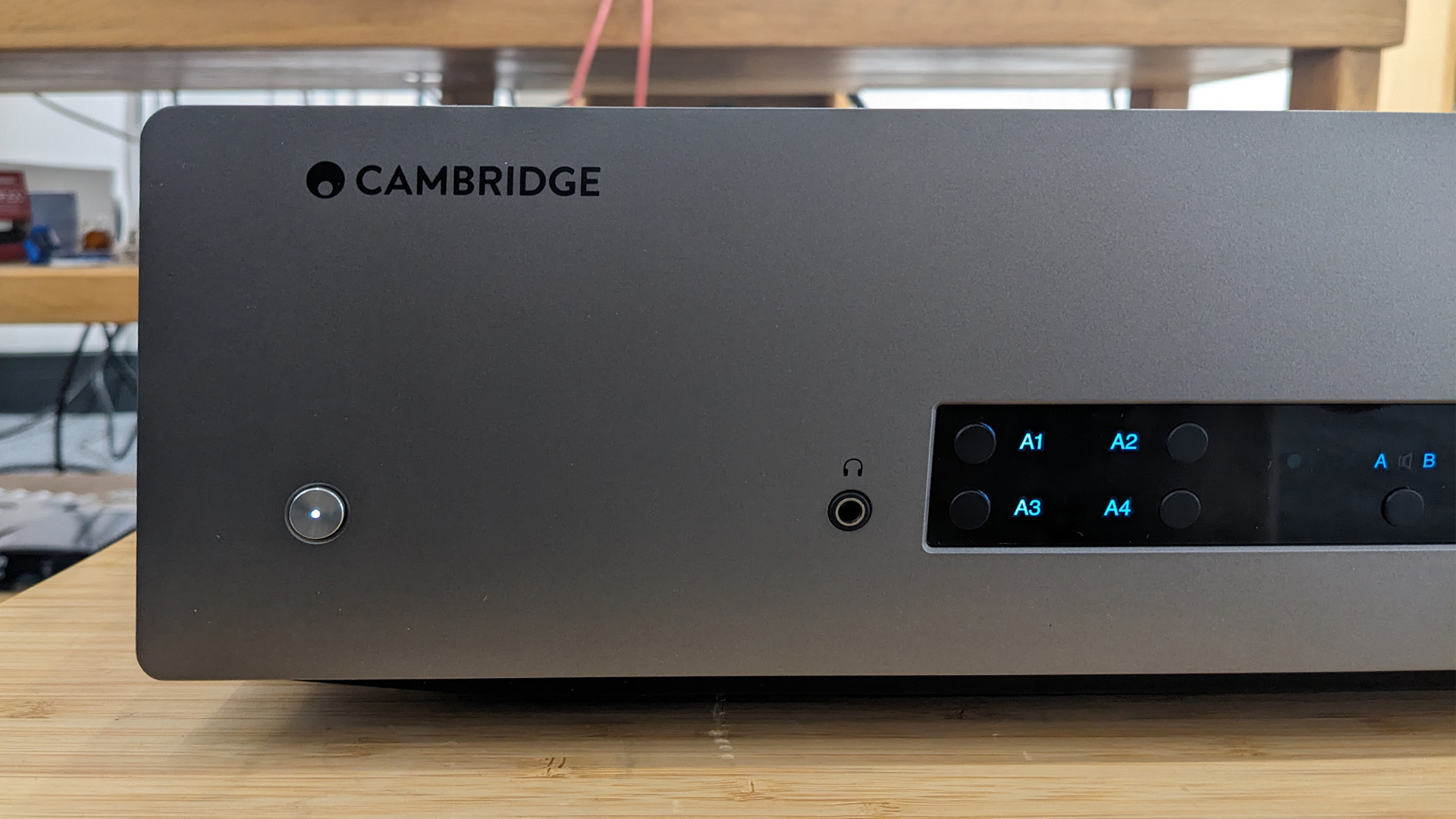
We reacquaint ourselves with the older Cambridge amplifier before firing up its successor, and are met with the confident delivery we remember: clear, full-bodied (particularly in the midrange) and with a slightly forward inclination that leans into music. Its balance of strengths remains enjoyable even today.
Switch over to the CXA81 MKII, however, and the years between them are revealed as obviously as those between Harrison Ford’s portrayal of Han Solo in the first Stars Wars film and The Force Awakens. You’re immediately drawn into the music even more thanks to significant gains in clarity, detail and openness.
It’s a bigger, bolder and more authoritative performer that, as is evident with the fat walking bassline in Mac Miller’s What’s The Use?, also has a weightier, grippier low-end – even if you don’t quite get the same sense of musical drive as you do with the veteran model. Like a floor-to-floor living room window, it invites you into whatever is before you.
Once again, we find ourselves falling for the mid-range model’s lush, clean midrange. Playing Adrienne Lenker’s zombie girl, it captures the rawness of her sweet, melodious vocal and ably tracks the subtle dynamic lurches of her accompanying acoustic fingerpicking, the deep bass guitar notes anchoring the piece prominently.
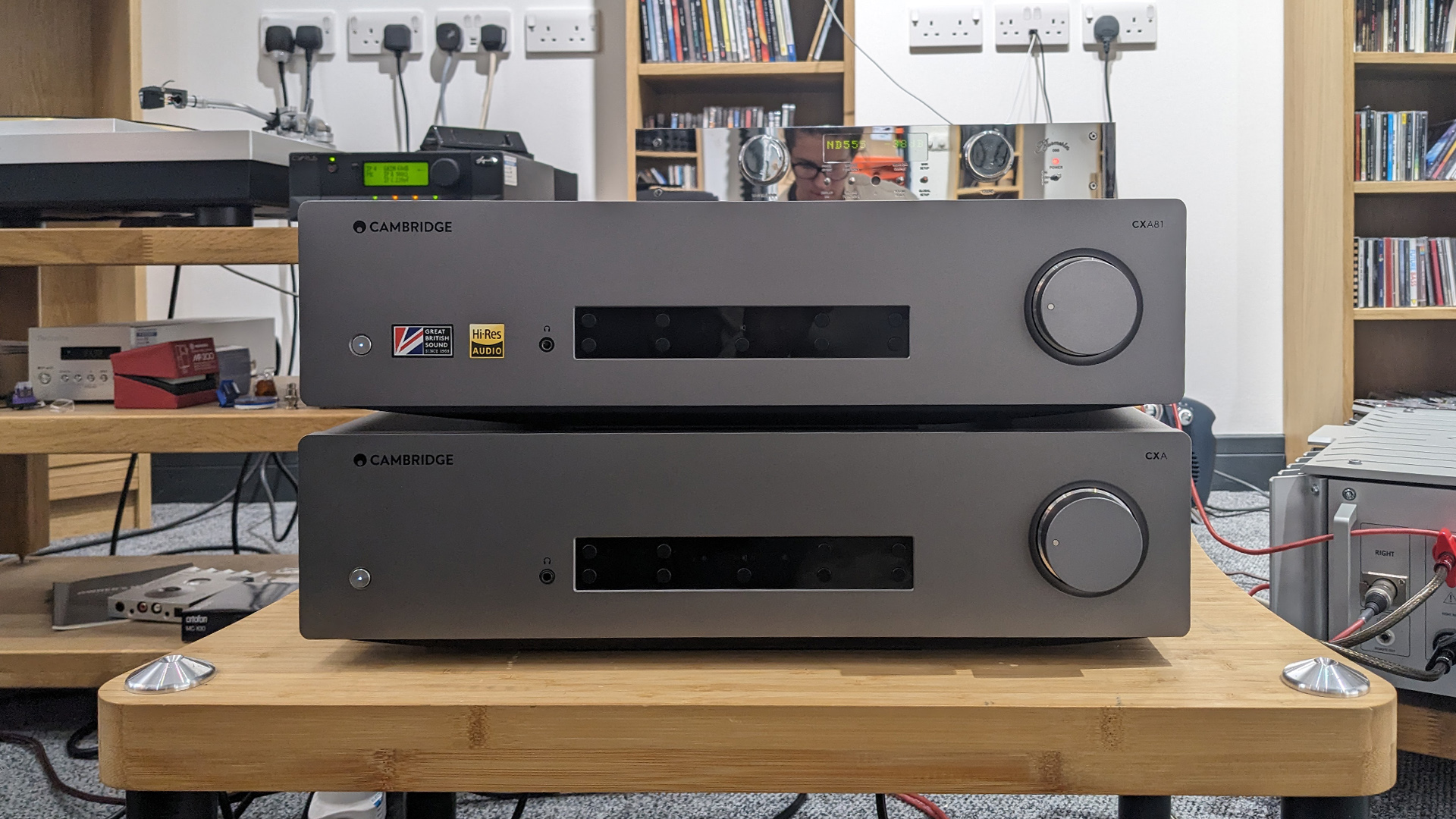
So far, so good. And we are pleased to report that the CXA81 MKII feels just as at home with appropriate, price-comparable partnering kit, such as the KEF LS50 speakers, as it does with our reference system.
Its delivery remains as consistent as we would expect through the digital connections, too, the move to a new DAC chip clearly paying off. Sure, that mighty big presence and scale is somewhat less mighty, as though the soundstage has been minimised via the standard pinch-to-zoom action on a phone screen, and the higher frequencies are noticeably thinner. But in terms of tonality and, to a large extent, quality, it is more or less in line.
Bluetooth performance is still an area of weakness for most amplifiers that integrate it – cruder, notably less clear and detailed and missing the polish of the wired connection – although fine for occasional use.
It’s when we bring another music genre and amplifier into our testing that the CXA81 MKII’s foibles come to the fore.
Play Yellow Mellow by Australian psych-rock band Ocean Alley, and the amplifier’s somewhat muted rhythmic drive compared to its predecessor reveals itself.
The funky jazz fusion of cymbals, keyboard and guitar fills the soundstage with purpose, but while its pace should be laboured at the beginning before launching into its prevailing buoyant tempo, it all feels a little one-speed.
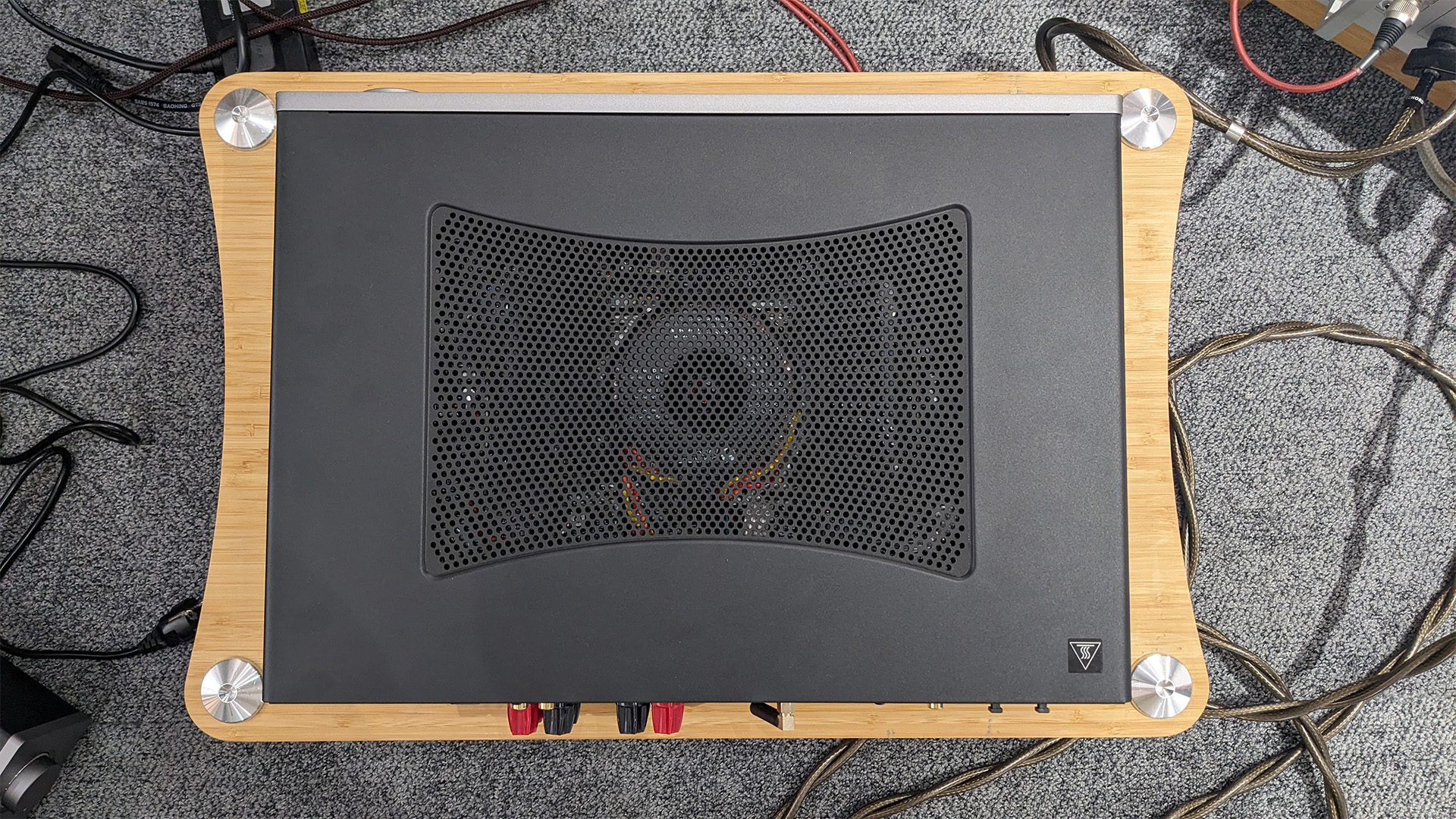
It’s time to hook up the class leader at the Cambridge amp’s price point – the Award-winning Arcam A15 – to our reference system instead, and indeed its clearly more musically cohesive and organised delivery is more convincingly able to carry the momentum and pace-changes of the piece.
While the Arcam is a little lighter in the bass than the Cambridge, it is more agile down there, too.
Over to Black Country, New Road’s Besties, and, again, the current Award-winner better communicates the playfulness of the harpsichord intro, as well as the rhythm of the tune-carrying guitar beneath Georgia Ellery’s vocal.
In its own right, the CXA81 MKII doesn’t exactly feel dynamically limited in its rendition of the Out Of Africa Theme, riding the ebbs and flows of the strings and woodwinds, and rising to the occasion of the climax. Yet the A15 is that bit more expressive and organised in delivering the intricate instrumentation, and is ultimately more interesting to listen to.
Verdict
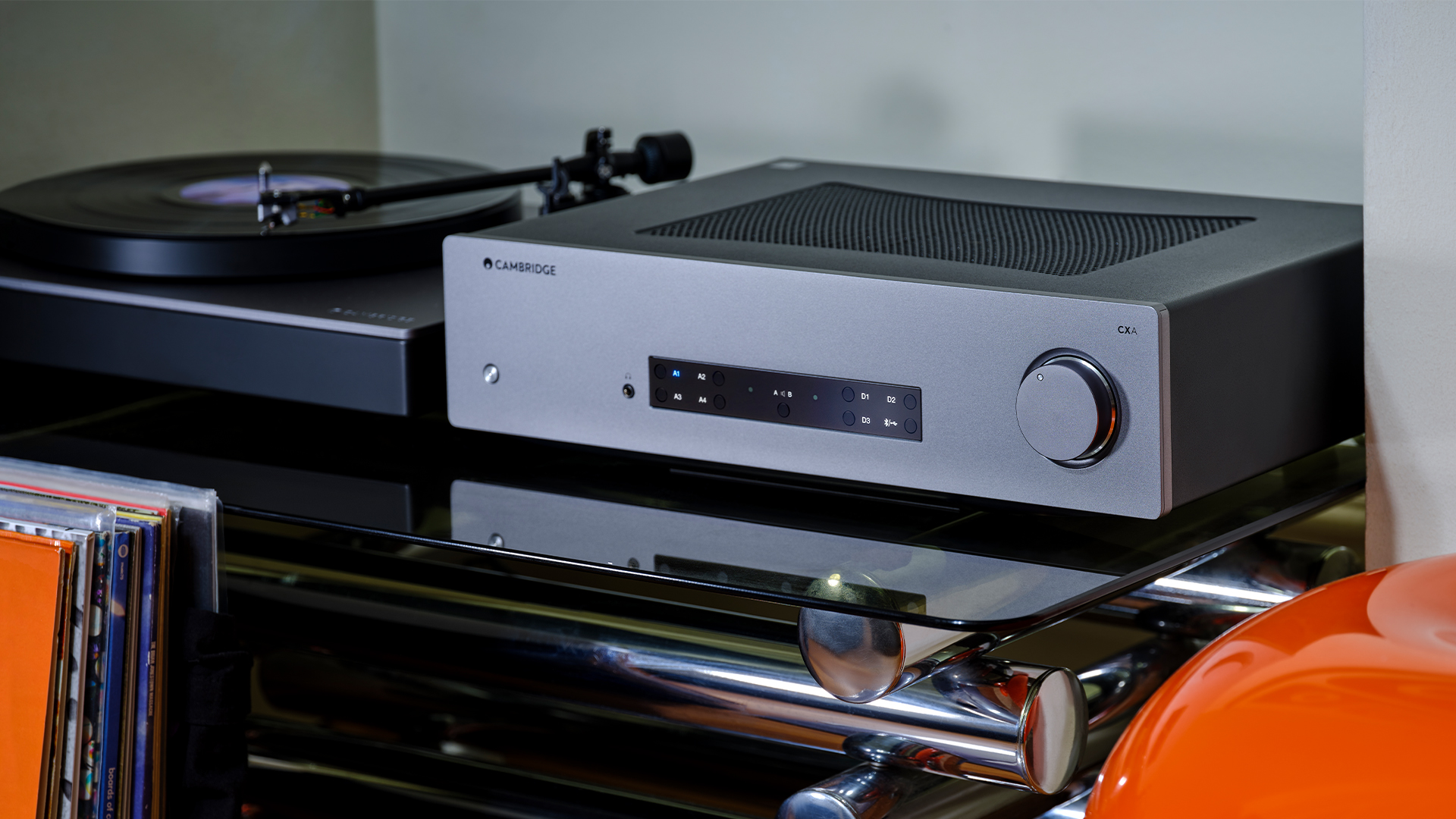
The Arcam A15 is a special amplifier, hence its back-to-back What Hi-Fi? Award wins – an achievement Cambridge Audio has itself enjoyed many times in the past, and not only for its CXA81. Arcam has raised the bar considerably at this competitive price level, and while Cambridge Audio has moved its CXA81 on in nearly every aspect, it hasn’t closed the gap on its closest rival with the latest iteration.
We love how the CXA81 MKII grabs us from the off with its impressively big, clear and full sound, we just wish it had the musical tenacity and drive to keep us hooked.
Review published: 11th July 2025
SCORES
- Sound 4
- Build 5
- Features 5
MORE:
Read our review of the Arcam A15
Also consider the Rega Elex Mk4
Best stereo amplifiers: 9 class leaders chosen by our review experts

Becky is a hi-fi, AV and technology journalist, formerly the Managing Editor at What Hi-Fi? and Editor of Australian Hi-Fi and Audio Esoterica magazines. With over twelve years of journalism experience in the hi-fi industry, she has reviewed all manner of audio gear, from budget amplifiers to high-end speakers, and particularly specialises in headphones and head-fi devices.
In her spare time, Becky can often be found running, watching Liverpool FC and horror movies, and hunting for gluten-free cake.
- Ketan BharadiaTechnical Editor
You must confirm your public display name before commenting
Please logout and then login again, you will then be prompted to enter your display name.
